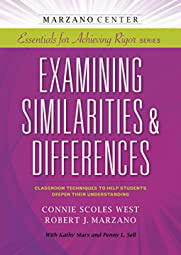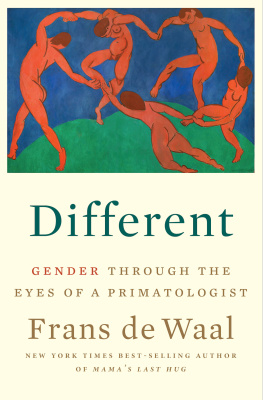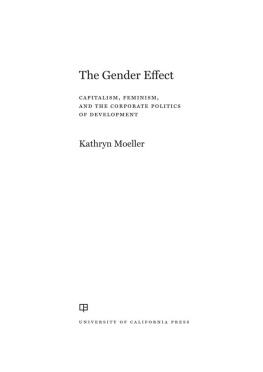SEX DIFFERENCES AND SIMILARITIES IN COMMUNICATION
LEAS COMMUNICATION SERIES
Jennings Bryant and Dolf Zillmann, General Editors
Selected titles in Interpersonal Communication (Rebecca G. Rubin, Advisory Editor) include:
Allen/Preiss/Gayle/Burrell Interpersonal Communication Research: Advances Through Meta-Analysis
Cupach/Spitzberg The Dark Side of Interpersonal Communication Kalbfleisch/Cody Gender, Power, and Communication in Human Relationships
Petronio Balancing the Secrets of Private Disclosures
Stafford Maintaining Long-Distance and Cross-Residential Relationships
This edition published in the Taylor & Francis e-Library, 2009
To purchase your own copy of this or any of
Taylor & Francis or Routledges collection of thousands of eBooks
please go to www.eBookstore.tandf.co.uk.
Copyright 2006 by Lawrence Erlbaum Associates
All rights reserved. No part of this book may be reproduced in
any form, by photostat, microform, retrieval system, or an
other means, without prior written permission of the publisher.
Library of Congress Cataloging-in-Publication Data
Sex differences and similarities in communication/edited by Kathryn
Dindia, Daniel J.Canary. 2nd ed.
p. cm.(LEAs communication series)
Includes bibliographical references and index.
ISBN 0-8058-5141-0 (casebound: alk. paper)ISBN 0-8058-5142-9 (pbk.:alk. paper)
1. CommunicationSex differences. I. Dindia, Kathryn. II. Canary, Daniel
J. III. Series.
P96.S48S49 2006
155.33 dc22 2005030783
ISBN 0-203-87338-6 Master e-book ISBN
Contents
Kathryn Dindia
Elizabeth Aries
Toward an Expanded Orientation to the Comparative Study of
Womens and Mens Same-Sex Friendships
Paul H.Wright
How Big Are Nonverbal Sex Differences? The Case of Smiling and
Nonverbal Sensitivity
Judith A.Hall
Gary N.Powell and Laura M.Graves
Researching a Gendered World: The Intersection of Methodological
and Ethical Concerns
Mike Allen and Kathleen S.Valde
Peter A.Andersen
Brant R.Burleson and Adrianne W.Kunkel
Alice H.Eagly and Anne M.Koenig
Mary Crawford and Michelle R.Kaufman
Lesley Di Mare and Vincent R.Waldron
Anthony Mulac
Laura K.Guerrero, Susanne M.Jones, and Renee Reiter Boburka
Judee K.Burgoon, J.P.Blair, David B.Buller, and Patti Tilley
A.Elizabeth Lindsey and Walter R.Zakahi
Pamela J.Kalbfleisch and Anita L.Herold
Melanie R.Trost and Jess K.Alberts
Paul A.Mongeau, Mary Claire Morr Serewicz, Mary Lynn Miller Henningsen, and Kristin Leigh Davis
Daniel J.Canary and Jodi Wahba
Lynda M.Sagrestano, Christopher L.Heavey, and Andrew Christensen
Julia T.Wood
Janet Shibley Hyde
Preface
A science teacher in Baltimore, Md., was offering lessons in anatomy when one of the boys in class declared, Theres one less rib in a man than in a women. The teacher pulled out two skeletonsone male, the other femaleand asked the student to count the ribs in each. The next day, the teacher recalls, the boy claimed he told his priest what happened and his priest said I was a heretic
Gibbs (2005, p. 40)
Of course, men and women differ in many ways. Some biological differences, for instance, are undeniable in that no one seriously considers an examination of sex differences in reproductive roles (pregnancy, childbirth, and breast-feeding). However, some biological similarities are undeniable in that no one seriously considers an examination of sex differences in number of ribs. In addition to sex differences, sex inequalities are clearly evident in the division of labor, unequal pay for men and women, and the sex composition of the highest levels of corporate and government offices. For instance, women working outside the home continue to struggle to achieve equal pay in the workforce and a fair division of labor in the home. Less, clear, however, are the differences in mens and womens communicative behaviors in professional, social, and personal relationships.
Scholarly opinions about the differences between men and women are more than academic; opinions about sex differences have personal, professional, and political implications. Given the seriousness of the implications, it is no wonder that scholars often advocate their academic positions on the issue of sex differences and similarities with passion and zeal.
This book examines the social scientific literature regarding how men and women communicate. Readers who are interested in the scientific literature on communication, social psychology, and related fields should find this anthology an important resource. Students in advanced undergraduate classes and graduate classes, and practitioners interested in research-based conclusions regarding sex differences in communicative behavior, should be especially informed. People who seek support for the point of view that men and women are divided into dichotomous or polarized groups will probably want to look elsewhere.
This is the second edition of Sex Differences and Similarities in Communication. The first edition was published in 1998. Since then, far more research has been conducted, and by scholars across disciplines such as communication, social psychology, sociology, linguistics, organizational behavior, and other literatures, on sex differences and similarities in communication. Several of the authors contributing to this volume were not included in the first edition. Some of the chapters present new perspectives on sex or gender and communication; some present substantially revised versions of earlier chapters. All are more theoretically oriented and based on a wider range of empirical data than the first edition.
We are especially pleased by the breadth of scholarship evidenced in this volume, breadth across not just the field of communication but also social psychology, sociology, and organizational behavior. Communication is not solely studied by communication researchers. It is important that communication anthologies represent the diversity of communication theory and research found in other disciplines, just as it is important that other disciplines recognize the scholarship being carried out in the field of communication.
As the title implies, chapters in this book present sex similarities as well as sex differences in communication. The primary reason we examine sex similarities in addition to sex differences stems from our desire to present a balanced scientific anthology on the topic. In our view, another book that polarizes men and women would move the corpus of knowledge backward, making us less informed than we should be at this point in time. Instead, this book advances the idea that, with respect to communicative behavior, men and women are similar in some domains and different in others. The task, then, is to juxtapose similarities and differences.
We believe that sex similarities provide a context, a backdrop, for sex differences. This backdrop offers ways to contrast communicative differences between men and women, yet the backdrop metaphor represents more than an ideological frame of reference. More precisely, using similarities to contextualize and clarify differences between men and women allows researchers to look for differences only in places where we theoretically and empirically hypothesize them to be, as opposed to everywhere. The scientific study of how sex similarities might contextualize and inform the study of sex differences is largely a novelty. Most of the time, researchers want to see differences, not similarities; researchers seek confirmation of the research hypothesis, not support for the null. Only when they find no significant differences do scientists tend to admit that similarities appear plausible.










